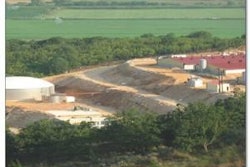Yet despite weaker livestock numbers and a continued recession, things are not exactly playing out that way. True, no $8/bu. corn seems to be in the offing as occurred briefly in 2008, yet prices were not exactly cheap either. July corn futures on the Chicago Board of Trade in late June were $3.82/bu., December at $4.01, with futures greater than $4/bu for all of 2010-10.
But the real price show-stopper is soybeans, with stocks the lowest in decades leading to July futures prices at just under $12/bu, just under $11 for September, and $9-something beans for all of 2010-11. Soybean meal is expected to be high and volatile through at least October. After rising above $400/ton on fear of shortages this summer, July meal futures edged back barely, to $397 in late June. But the market expects lower prices and more ample supplies later on, evidenced by December futures at just over $300/ton, and below $300 for all of 2010-11. If the soybean meal scenario plays out, it will be welcome news for livestock producers, who definitely are in need of some good news somewhere.
Reasons for price advance
Key reasons for the price advances this year: very poor harvests in Brazil and Argentina, which triggered heavy imports of U.S. oilseeds by China, and late planting of U.S. crops.
Looking at the all-important USDA numbers, the department projects feed and residual use for the year at 5.35 billion bushels, 588 million less than during the previous year. Use during the first half of the current year has been reported at 3.572 billion bushels, 589 million less than during the first half of the 2007-08 marketing year. If the USDA’s projection for the year is correct, use during the last half of the year should be equal to that of a year ago, notes University of Illinois economist Darrel Good.
For seed, food, and industrial use of corn, USDA projects a 15.5% increase for the year. USDA’s method appears to overestimate feed use and underestimate processing use of corn for the quarter, but the estimate of total use appears reasonable, Good says.
Soybean crush
For soybeans, for the year, USDA projects the domestic soybean crush at 1.65 billion bushels, 8.4% smaller than the crush during the 2007-08 marketing year. If the USDA’s projection for the year is correct, crush during the final four months of the marketing year will total 523 million bushels, 6.8% less than during the same four months last year. Based on the acceleration in the rate of domestic crush in March and April, the crush for May might be slightly underestimated, suggesting slightly smaller June 1 stocks.
Good says that in addition to planted acreage, 2009 corn and soybean production potential will be influenced by yield prospects. With the most critical part of the growing season yet to come, the recent sharp price declines suggest the market does not have significant concerns about yields at this time.


















